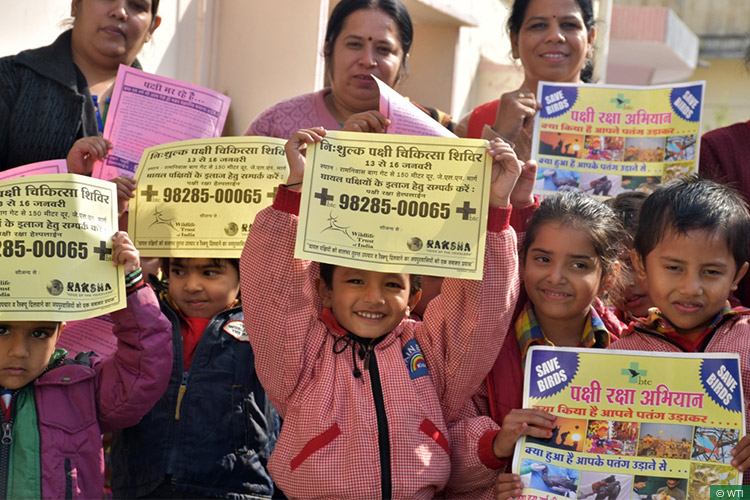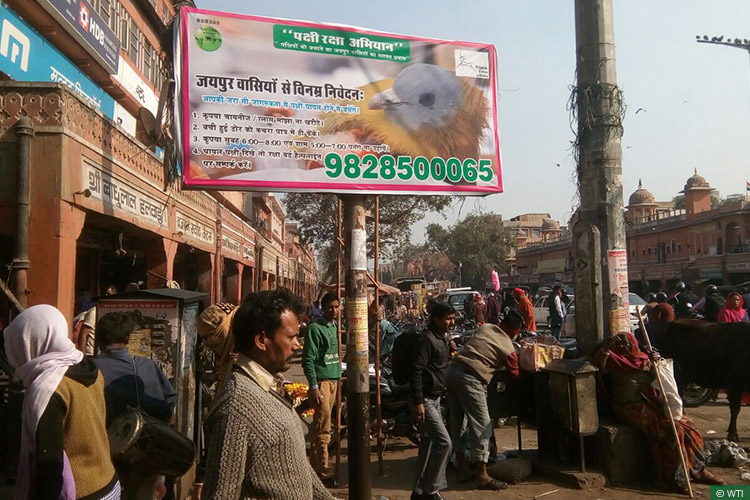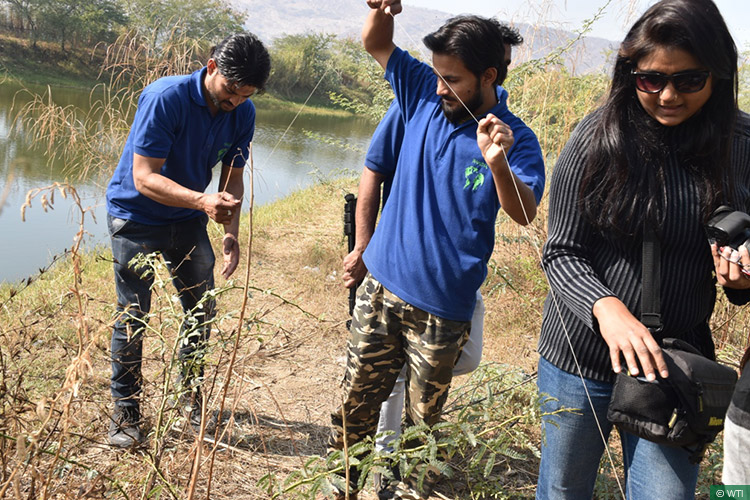 An awareness event organised in a prominent Jaipur school
An awareness event organised in a prominent Jaipur school
Jaipur, Rajasthan, February 7, 2017: Makar Sankranti, the traditional Indian harvest festival that falls annually in January, is an occasion for celebration throughout the country. In north and western India, particularly in the states of Rajasthan and Gujarat, the festivities traditionally include kite flying. But with an increasing number of kites in the air and a sharper than ever competitive edge in kite-fighting, what is supposed to be a celebration of rebirth in nature has turned these areas into killing fields for their local and migratory bird populations.
The growing use of glass-coated and in particular non biodegradable ‘Chinese’ manjha (kite string) – made of metallic/nylon yarn with an abrasive coat of crushed glass glued onto it – has made things worse. Birds cannot see this fine string while flying and thousands of them get tangled up and injured or killed during the festival each year. Also, after the kite flying is done, coils of this sharp manjha are found hanging on trees and lampposts: a hazard for birds and people alike.
Wildlife Trust of India (WTI) has been working with government agencies and local NGOs to address this issue over the past few years. Among the several activities conducted in the lead up to, during, and after Makar Sankranti this year was a sustained awareness campaign in collaboration with the youth-based organisation Raksha, to sensitise people in and around Jaipur about the long-term impact of kite-fighting, especially with Chinese manjha, on avian populations in the area.
 One of several hoardings placed at high-footfall areas around Jaipur
One of several hoardings placed at high-footfall areas around Jaipur
At the outset, the project team met with Shri Gajendra Singh Khimsar, Minister of Forests and Environment, Government of Rajasthan, as well as the Additional District Magistrate and Divisional Forest Officer (Territorial), to get their support in enforcing a ban on kite flying at designated times of the day, and stopping the use of Chinese / glass-coated manjha. The Hon’ble Minister appealed to citizens to follow the guidelines established on these issues and announced the launch of a dedicated helpline number for bird rescues during Makar Sankranti.
With the growing use of glass-coated ‘Chinese’ manjha (kite string) during Makar Sankranti, thousands of birds are getting injured or killed
Presentations, talks and video screenings were also held in various schools and colleges in a bid to sensitise the youth about the effects of kite flying on free-ranging birds. Over 1350 students from five notable schools in Jaipur signed pledge sheets declaring that they would not use Chinese manjha nor fly kites from 6.00am to 8.00am and 5.00pm to 7.00pm, when avian activity is generally at its peak.
To ensure wider coverage of the issue, a media workshop was organised on January 6 at the Pink City Press club. Over 20 media houses participated in the event, which also served to publicise the rescue helpline number. A training workshop on avian first-aid was also conducted for 200 students of the Malaviya National Institute of Technology on January 21 The students pledged not to fly kites and organised an awareness rally in the area the next day.
 The project team undertaking a manjha removal exercise in the area around Man Sagar Lake
The project team undertaking a manjha removal exercise in the area around Man Sagar Lake
Hoardings were also placed at high-footfall areas of Jaipur like the Yaadgaar traffic signal, the Hanuman Temple, Chandpole Gate and Jorawar Singh Gate. These areas are located near the famous Man Sagar Lake and Amer Fort and see a lot of kite flying during Makar Sankranti.
In addition to these awareness activities, veterinary camps were set up to provide first-aid to rescued birds. Some 1100 calls were received from concerned citizens through the designated helpline number and 90% (over 1235) of the birds that were brought to the veterinary camps were successfully treated and released. A manjha removal programme was also organised near Man Sagar Lake during and after the festival, which led to the collection of over 900 metres of kite string.